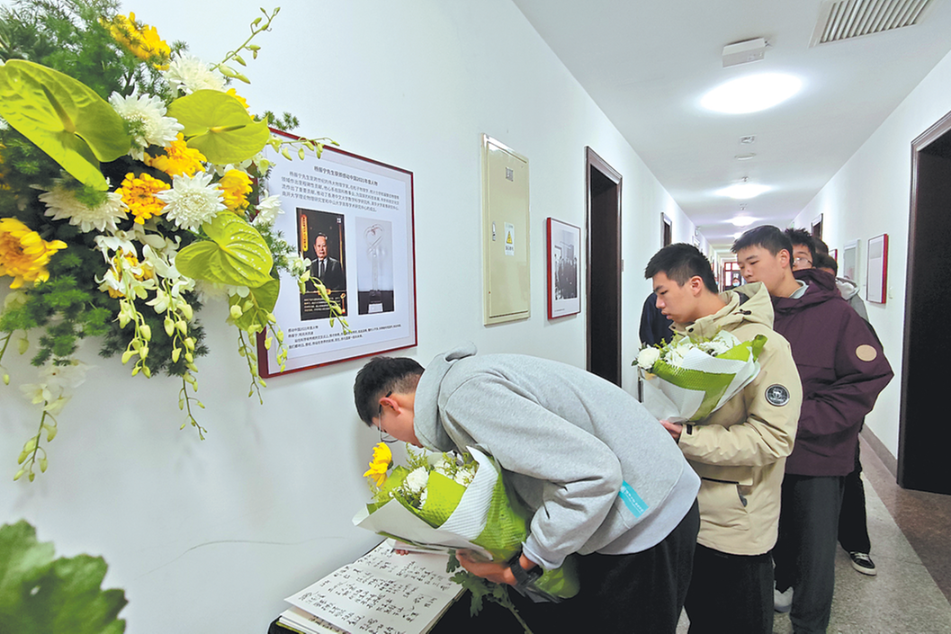Hami attracting large-scale projects
Xinjiang city's rich natural resources get close attention from investors
By Li Jiaying in Beijing and Mao Weihua in Urumqi | China Daily | Updated: 2024-10-03 07:35

"Our goal is to establish Xinjiang's major new materials industrial cluster here," Dou said.
Silicon is not the only new material that Hami is betting its future development on. Rich in mineral resources, the city ranks first in Xinjiang in terms of reserves of copper, nickel, titanium, magnesium, vanadium and molybdenum. Among them, the estimated 2 billion tons of vanadium-titanium magnetite places the city third nationwide and makes it the only complete titanium industrial chain in Xinjiang.
Since its establishment in 2013, Hami-based Xinjiang Xiangrun New Material Technology Co Ltd has built a comprehensive titanium industrial chain, covering titanium ore, titanium sponge, titanium processing and relevant finished products. In 2023, it produced over 33,000 tons of titanium sponge and about 19,500 tons of titanium materials, both placing it second in the country.
The company's new 30,000-ton titanium and titanium alloy project is expected to begin production by the end of this year. Once fully operational, its annual capacity for titanium sponge will exceed 100,000 tons, and for titanium and titanium alloys, it will surpass 50,000 tons, said Liu Honggui, the company's deputy general manager.
"It is expected to make us the world's largest titanium producer by then," Liu said.
Hami Vice-Mayor Li Jianyong highlighted the city's strategy to capitalize on its abundant local resources, saying that the city has already developed annual capacities of 20,000 tons of titanium and titanium alloy, 35,000 tons of magnesium and 60,000 tons of industrial silicon.
"Moving forward, we will focus on integrating new materials with green electricity consumption, aiming to build a new materials industry cluster worth over 30 billion yuan ($4.26 billion), centering around titanium, magnesium, silicon and copper," Li said.
Li added that the city will also attach more importance to other new growth drivers such as computing prowess for high-quality development.
Hami's integrated computing center in Yiwu county has established a landmark breakthrough for the region, he said. Its computing project has created a computing power network connecting Zhengzhou in Henan province, Qingyang in Gansu province and Hami, representing "a leap from zero to one" for the city's computational capabilities.
To date, the center has built eight intelligent computing servers, 100 general-purpose computing servers and 80 supercomputing nodes, with a total computing power of approximately 150 petaflops. It has also established cross-regional data transmission networks connecting Hami with Urumqi, Zhengzhou, Beijing and Chongqing. More than 10 domestic enterprises and research institutes are now using the high-speed computing infrastructure for artificial intelligence training, according to the center's data.
Computing power and electricity are symbiotic industries. Hami's vast wind and solar energy resources allow it to provide competitively priced green electricity. Given that electricity costs account for over half of computing companies' operational expenses, Hami's energy advantage has enabled it to cultivate a competitive edge in the computing power industry, said Li Chao, executive director of Hami's energy-computing power fusion research institute.
"We're converting Xinjiang's renewable energy advantage into affordable electricity prices, which in turn fuels computing power development," Li said, adding that a slew of State-owned enterprises, tech firms and investors are flocking into Xinjiang to invest in renewable energy and computing power.
"The green computing power produced here is expected to serve businesses across China and international partners," he said.
With a total infrastructure investment of 765 million yuan, the second phase will feature computing power facilities tailored to diverse sectors such as large model inference, energy sector and smart city operations. These developments will support smart governance, digital economy growth, and cross-regional data backup services for cities in Central and East China, Li added.
"The county is working full steam ahead on our computing power economy park, which will house two buildings covering 35,000 square meters and include 2,650 server racks. With expected full completion by the end of the year, Yiwu is poised to become Xinjiang's most competitive computing power base," said Peng Peng, head of the county's Party committee.
Dou of Hami's bureau of industry and information technology further elaborated on the city's plans.
"We will deepen our cooperation with cities like Chongqing, Zhengzhou and Beijing to enhance computing power dispatch and testing, and at the same time, expedite the expansion of computing applications into sectors such as culture, transportation, education and healthcare. The aim is to foster coordinated development by promoting the computing industry with real-world applications."
Wang Xinran contributed to this story.
Contact the writers at lijiaying@chinadaily.com.cn
























